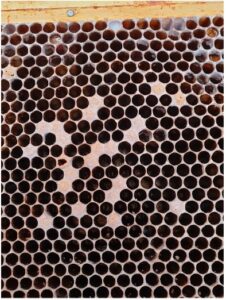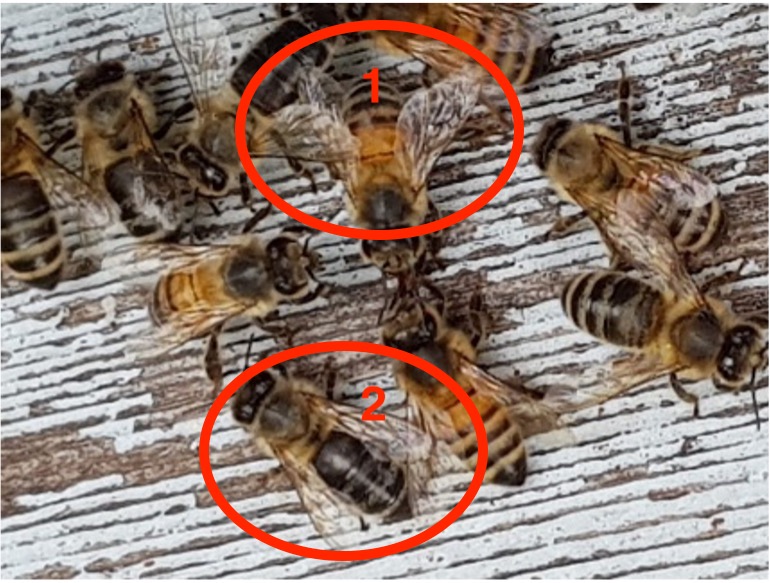
We have been regularly attending the apiary to check the bees over the winter. The colonies were left with ample food stores from nectar they had collected in the late summer/early autumn. As we had not been able to open and check stores recently we decided to give a block of fondant to each hive on January 15th. Today we quickly peeked under the roofs and found several that had workers actively munching away.
Some did not have activity around the fondant, but we saw fresh wax cappings on the ground underneath – a sign that the colony is alive and using their honey stores in the brood box rather than coming up to eat fondant.


This colony has a paving stone in front of the entrance which shows up the dead bees that have been removed. The oldest bees will continue to die and when the weather is warm enough for the cluster to break the dead/dying will be removed to maintain a healthy hive. Dead bees always show up more clearly on a hard surface than in the grass.
Unfortunately, the colony in the WBC was found to be dead. A brief ‘post mortem’ was carried out to work out what had happened – primarily to check that it was not a notifiable brood disease – but it is always useful to see if it had been something we had or had not done at the end of the season e.g. not left enough food.


The floor had a scattering of dead bees but not a big drop associated with sudden death of a large colony.
There were plenty of frames of food though a bloom of grey mould was starting to cover these and the brood frames, so the hive had probably been empty of bees for a while. There was no evidence of any faecal staining on the frames.


There was a small scattering of old capped brood which had been ignored resulting in the developing bees underneath dying due to neglection but no signs of any recent laying activity or open brood. There was no dead cluster or signs of late queen cells. There was the odd dead bee adhering to the brood frame but essentially the hive was empty of bees. We suspect the queen had failed some weeks before and the colony slowly imploded as the bees died out. We had noticed some limited activity at the entrance during the winter but in hindsight this was probably due to robbing.
The colony had suffered from Chronic Bee Paralysis (CBPV) during the summer but had gone into Autumn as a good-sized colony with a marked laying queen. This photo taken in the summer shows how the infected bees were not allowed access into the hive by the guard bees as they smelt ‘different’. This helps to reduce infection rate inside the colony. Once a cohort of disease-free bees emerged this behaviour stopped.


The bees stayed out on the landing board until they died of the infection or starved.
1 Typical black, shiny, hairless body as the disease progresses.
2 ‘K wing’– another symptom of CBPV. The wings unhook and each pair sticks out like the letter K instead of folding neatly down their back. They also flutter and make a distinctive noise.
We sealed the entrance to ensure that no bees from other colonies could enter should the weather warm up. Next week we will remove the old frames and burn them, clean and scorch the wooden boxes and get it ready to repopulate in the spring.
